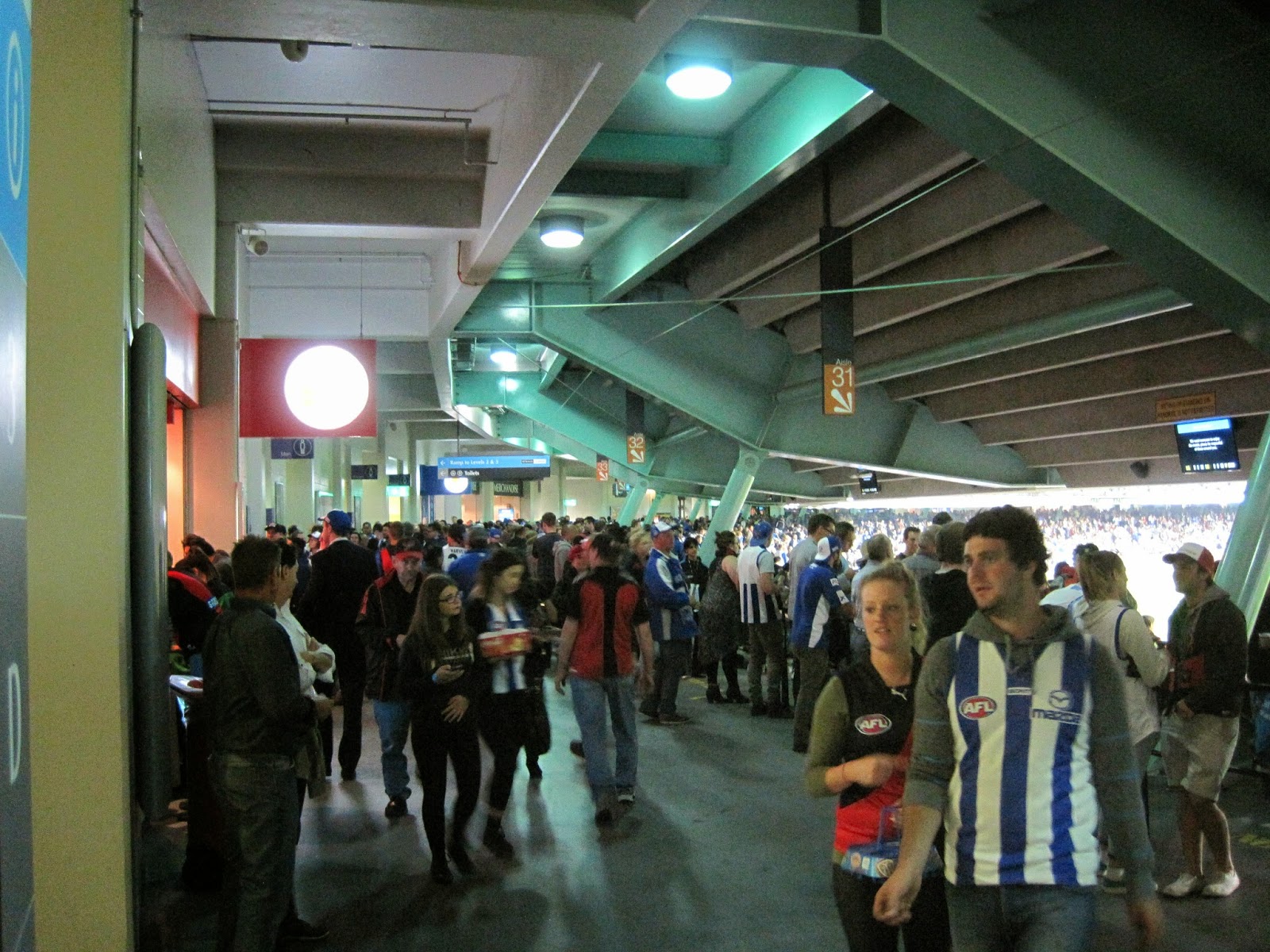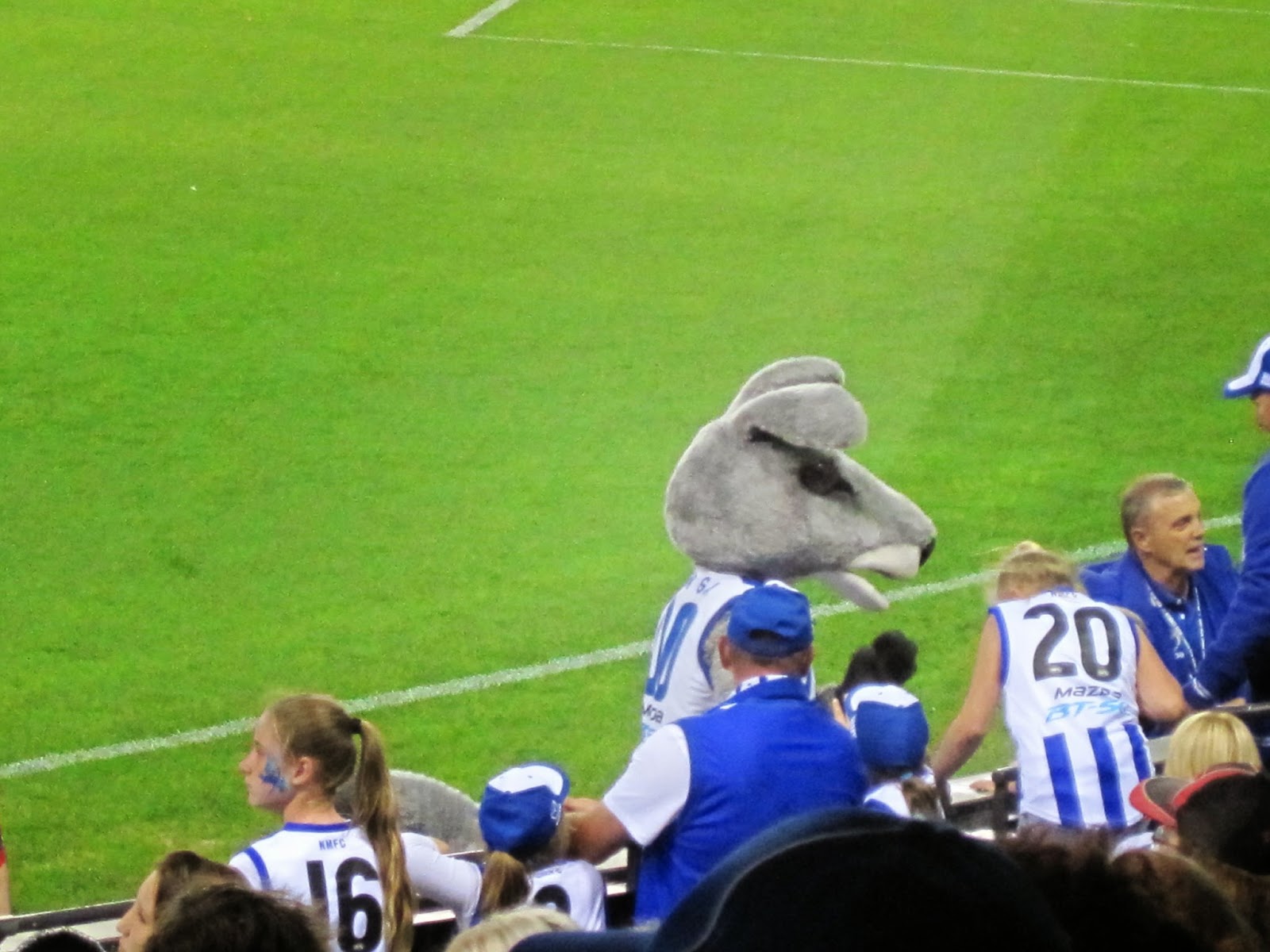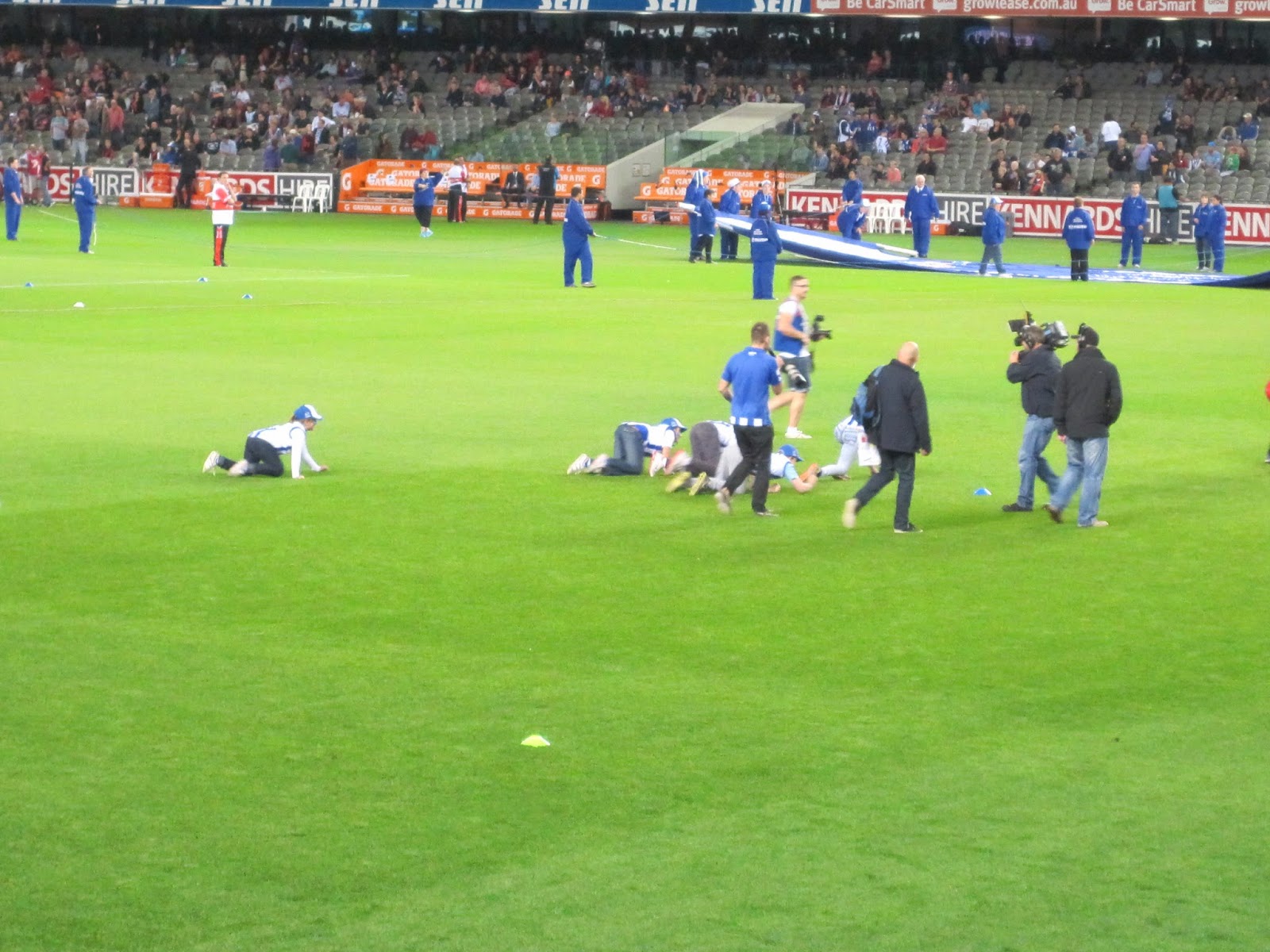Indeed, as the penguins come on shore they start to make this little chirp. Not quite a quack, and not quite like a little chirp chirp - it sounds like something in between. They are relatively quiet as they head for the hills across the beach, but then once they get safely to their boroughs they really start up their honking/quacking/chirping. So as the night goes on, the sound increases. It is quite something.
Our guide explained to us that most penguins are pretty social creatures (the yellow eyed penguin that we saw in NZ is the only one that is not social). Yet, the penguins spend about 80% of their time in the water alone. So our guide indicated that once the penguins arrive back into the hills, they quickly socialize with each other and catch up on what's going on in the neighborhood. They actually visit each other after they make it "home" to their particular nest. Its a kind of "hi - how are you doing, haven't seen you in a while" type of greeting that they are making to each other. The guides say that the noise starts to abate as the night wears on and they settle into their nests. When we sat on the beach watching, I found it more entertaining to listen to the little guys and hear them rush by in their scurry to get to the hills than actually try to follow them with the night vision goggles. For a creature so worried about predators, they might want to practice some nighttime noise discipline. Any way - thanks for the reminder and email Sandy.
AFL - Australian Rules Football
Australian Rules Football (or Aussie Rules or just plain Footie) is the game in much of Australia. From an outsider's perspective, it is a cross between rugby and soccer. The origins of Australian football are not well known, but it is actually quite an old game - having started around the 1850's in Melbourne. Today, it has even spread to other parts of the world (New Zealand, Papua New Guinea to name a few), although it is still biggest here in Australia - and it is super big in Melbourne.Australia is sports crazy. I know many people back in the States think too many US people and money is spent on sports (especially college and professional level), but we in the U.S. have nothing on the Australians. I think NZ treats sport pretty seriously too, but even they don't come close to Australia.
Sport (any sport, football, rugby, golf, basketball, netball - a form of basketball for women - golf, racing, motorcycling, biking, ...) you name it and the Australians are into it. They even have a fledgling baseball league and hosted the Dodgers/Diamondbacks for the 2014 baseball opening day this year in Sydney. The government (national and state) has a minister of sport, and we are told (during one of our parliament building tours) that the position rivals that of minister of health or education! Don't believe me, check it out on Wikipedia: http://en.wikipedia.org/wiki/Minister_for_Sport_(Australia).
Where we in the States get upset when a city wants to spend a half a billion dollars on a new stadium, it has been pretty common to see new stadiums being built or planned in Australian cities all the time (so far, Adelaide and Perth both have new ones being built or planned). Among Australians - the city most nuts about sport is Melbourne. So that makes these folks the crazies among enthusiasts.
So serious is Melbourne about sport that you can count at least 5 huge professional stadiums in the skyline of the city (especially from atop the Eureka Tower - see earlier post). They have a cricket stadium. football stadium, Rod Laver Tennis Stadium (and surround courts for the Australian Open), basketball field house, and another field house that I was not able to determine what it hosts. Of the 18 AFL clubs, nine of them play in the Melbourne area. That would be like having half of all the professional baseball teams or football teams playing in NY or Chicago.
MCG, Rod Laver Arena, and the large sports complex from the air - Sky Tower (above and below photos)
Hisense Arena
Rod Laver Arena from the Ground
Impressions of the facilities: Because of the number of AFL clubs in Melbourne, two stadiums are used for football: the Etihad Stadium and the Melbourne Cricket Grounds (just called MCG or simply "the G" by locals.) Both of these stadiums are huge. They seat 56,000 and 100,000 respectively. Games average 38,000 attendance last year. Walking into Etihad (where our game was held) you felt like you were walking into an NFL game or major league baseball game at home. Vendors hawking souvenirs, drinks, some food outside with people filing in to the stadium wearing the colors of their favorite team.
Etihad from outside - its downtown so its hard to get a picture of the building
Inside the stadium, again, you would be hard pressed to find something that separates the experience from a professional game (football, baseball, etc.) at home. People and families (lots of families) are busy finding their seats and most importantly getting their pre-game snacks and drinks. Beer is the adult beverage of choice - but wine is also quite popular and they had a number of wine selections from which they pour from a bottle. I read that the traditional food at a footy game was meat pie. While that was on the menu, the fair also included hotdogs, sausage, homburgs, fries (called chips here) and potato chips (crisps here). Again, you would have a hard time seeing any difference to American sport. In fact, from my observations, I would say meat pies have been relegated back behind the other food choices. Most Australians I saw were eating other items more than meat pie.
From the stadium concourse (above and below)
The quality of the food was pretty lousy - just like you find at many ball parks in America today. K had a veggie burger and chips, and I had a sausage and both of us could have done without either. For those wondering - yes, I did also try a meat pie (when in Rome...)! It tasted like stew put into a pie crust pastry. It wasn't horrible, and I am sure the quality of the meat pie I had was not as good as you could find in a restaurant or café in Australia. But I wouldn't be in a hurry to order another one at a game. I think K was waiting to see what consequences I suffered that evening as it did not smell that pleasant.We had been told (even warned) and read that the crowd and noise at a footy game can get to be quite rough. This we did not see. In fact, while the crowd was quite attentive to the game and into cheering for their team, I did not see one act of rude behavior, drunkenness, or even loud behavior. These fans make NFL fans look like hooligans and thugs. In fact, the two teams we saw play were both from Melbourne (or suburbs of Melbourne). Fans from each team sat side by side and I didn't even see any good natured back and forth.
The North Melbourne Kangroos' mascot before the game - mixing it up with the kids
Home team enters the stadium with some sort of electric-blue fireworks
Now, what you did see were people that were into the game. In America, I often think that people go to the games more for the spectacle of the event and people watching than the actual game itself. The old and young were very much into the game and pretty educated about what was happening (K and I were not - by the way- and the game itself we had to study about when we got to our hotel that night).
Other interesting differences... no vendors coming down the isles during the game. If you wanted something to eat or drink, you got up and got it for yourself. You would think that would lead to endless parades of people getting up and down. In fact, I don't think I saw anyone leave their seat (save a few kids for bathroom breaks) during the game. People would refill during the quarter and halftime intermissions. Imagine that in the US?
Advertisements and announcements were also at a minimum. The pre-game stuff featured some give away contests and kid's games, but it was not a lot and certainly not like what you see at a pro game in the US. Even signage in the stadium itself was minimal. The players wore uniforms with quite a few logos, but I think those are the team sponsor logos. What is nice is that there isn't any organized chanting or loud music playing - so what noise there is is in reaction to plays or referee calls. It was nice not to lose your hearing during a game like you do at American football games. People hold up simple signs ("Go Roos") or have small cheering sections, but nothing that parallels the organized frenzy you see in American sports.
Coaches were allowed on the field during the game. It is a fast moving game with a stop only at the quarters and halftime. So in order to communicate with your players, coaches are out running around on the field. Therefore, you don't see any fat coaches (could you imagine Bill Parcels or Bobby Cox running around after the players?). As I understand it, most of the coaches start coaching soon after their playing careers. I can see why.
Longevity in the game and with a team seems to be hailed with great fanfare - perhaps even more than actual play results. Players that were playing in their 150th, 100th, 50th, etc. game were celebrated before the game.
As for the game itself, as I indicated, it is kind of like rugby meets soccer. I won't begin to go into the details of the game, but essentially, each team runs (requiring a dribble every 15 meters), laterals, or kicks the ball down the field to an opponent's goal end. The playing field is oval in shape and each side has 18 players a side. The ball is like a rugby ball or rounded American football. The object of the game is to then kick the ball through a set of posts at the other end of the field. Do that and you get 6 points. Their are ways to get a single point too, but those tend to be pretty negligible points in the game (not always though) since most scores are in the 80 point range. [While in Perth, the sports news talked about a local team scoring only 34 points and that was considered a very low scoring game).
Like in baseball or football in the US, there appear to be a lot of stats. The TV commentators (shown on mounted stadium TVs) were reporting on all sorts of numbers at half. They meant little or nothing to us, but I could hear a lot of people around me mumbling about or highlighting certain ones to their friends as the stats were displayed. At half time, they brought out a bunch of kids (I'd say 10-12 range) and had them playing on a shortened field, just like you would see in a professional US football game.
Kids playing some sort of contest at half time and key stats displayed at halftime (below)
The game moves rather quickly, but unlike rugby, there is far less hitting. I was watching a little bit of rugby on TV while in NZ (that is New Zealand's big game of choice) and it was just plain brutal - American football without pads brutal. Footy defenses are still trying to tackle the opponent, but more emphasis seems to go into getting the ball during a pass or kick. From my perspective, the game is much more exciting than soccer since there is much more scoring and the kicks and laterals make for a lot more interesting things happening on the field. The kicking ability - especially in the accuracy - was amazing to watch. If you want to learn more about the game, go to the Wikipedia page here: http://en.wikipedia.org/wiki/Australian_rules_football. K and I found this intro to the rules to be quite helpful after we had seen the game and had all sorts of questions.This was opening week of AFL in Australia. It was the first game of both teams in our game for the season: the Essendon Bombers and the North Melbourne Kangaroos (two of the older clubs in the league with a long term rivalry). As I mentioned, both of these are suburbs of Melbourne. Given that all teams were in their first game this week, the sporting news - and sometimes even the regular news - was all over the first matches. It seems Australian professional sports is beset with many of the same problems we have in the US. Allegations of performance enhancing drugs, player allegiances shifting for more money, and even accusations of throwing games last season on the part of one team (betting on games is legal and big here) all lead the news (not just sports news).
In the end, the Bombers bombed the Kangaroos (99-60) . According to the papers, Essendon is supposed to have a good team, but their margin of victory was bigger than anticipated. There are already people calling for the Kangaroos coach's head - all sounds normal to us American sport fans :)
Watching an Aussie football game felt so familiar yet so foreign at the same time. The stadium, colors, sights and sounds were oddly familiar (as if spending the evening at a Monday Night Football game in the US), yet so many other things were out of place. They have been playing Aussie football for as long as we have been playing football or baseball - maybe even longer. So many things are the same and yet so many things are unique. That's what is so fun about travel - even the things you think you know and are comfortable with are turned on their ear.
K and I are on a flight to Alice Springs for a trip to Uluru tomorrow. We leave the lovely city of Perth on the West Coast behind. I plan to update everyone on that visit over the next couple of days. As I stair out the window, I see red ground and nothing else for as far as you can see (not a road or anything). This is an absolutely huge country with absolutely huge amounts of nothing in the inner regions.






















No comments:
Post a Comment